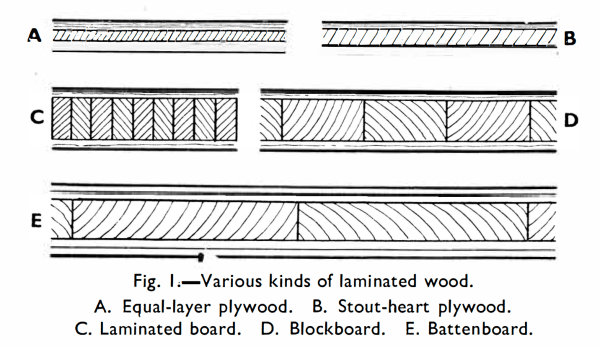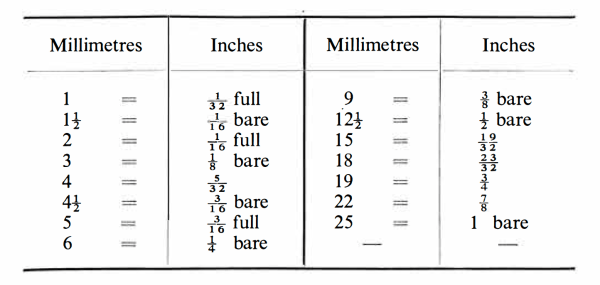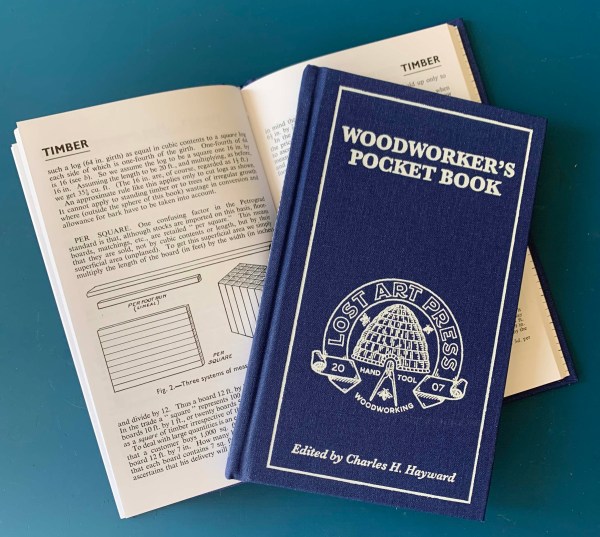The following is excerpted from “Woodworker’s Pocket Book,” edited by Charles Hayward.
PLYWOOD consists of three or more layers of veneer glued or cemented together with the grain of each piece laid at right angles to those adjoining. As this reduces (in the stouter thicknesses practically eliminates) any risk of splitting or of shrinkage, the strength of the board is greatly increased.
Three-ply is available in thicknesses from 1/64-1/4 in., multi-ply from 5/16-1 in. In the case of three-ply the centre core is usually thicker than the two outer veneers, when it is known as “stout-heart” as distinct from “equal-layer” (Fig. 1). When five, seven, or more veneers are used for multi-ply the same thickness of layer is used throughout. Boards are manufactured in standard-sized panels from 12 in. square up to several feet, and the range varies widely in different countries of origin.

As the metric measure applies to plywood thicknesses, it will be of service to give the approximate equivalents in inches.
A metre measures about 39-1/2 in. As there are a thousand millimetres in a metre, a simple calculation shows that about 25 mm. go to the inch. If this figure is remembered we have a quick guide to the approximate thicknesses.
In manufacture birch is more frequently used, but alder, ash, and gaboon are also in demand. Pine is largely employed in the Scandinavian countries, whilst Douglas fir is widely used in America.
Faced plywood means that one surface is veneered with a furniture hardwood such as figured oak. Edges should be lipped when to be exposed.
LAMINATED BOARD, now largely used for veneered furniture, is built up with the inner core made up of numerous narrow strips glued to each other, both surfaces being faced with a board, the grain of which lies at right angles to the core. Gaboon is a favourite wood and the thicknesses range from 1/2-2 in. Outside sizes vary considerably, but dimensions listed have reached as much as 16 ft. by 6 ft. 6 in. A normal size is about 8 ft. by 4 ft. When used for doors, sideboard, and table tops, etc., the edges are lipped and the surfaces veneered. The strips forming the core should not be wider than 7 mm. in laminated board.
BLOCK BOARD. In this case the strips forming the core are wider, 3/4 in. being an average. It is made in the same thicknesses as laminated board, but is less favoured for high-class furniture. From the illustration it will be seen that, both in the case of laminated board and block board, the grain of the core strips is reversed in the gluing. The core strips should not be more than 1 in. wide in block board.
BATTEN BOARD. This is a lower grade of built-up board in which the core strips are still wider. It is not so reliable for veneering. The core strips should not be wider than 3 in.
TABLE OF APPROXIMATE EQUIVALENTS, MILLIMETRES AND INCHES
Useful for finding thickness of plywood, etc., in inches.

